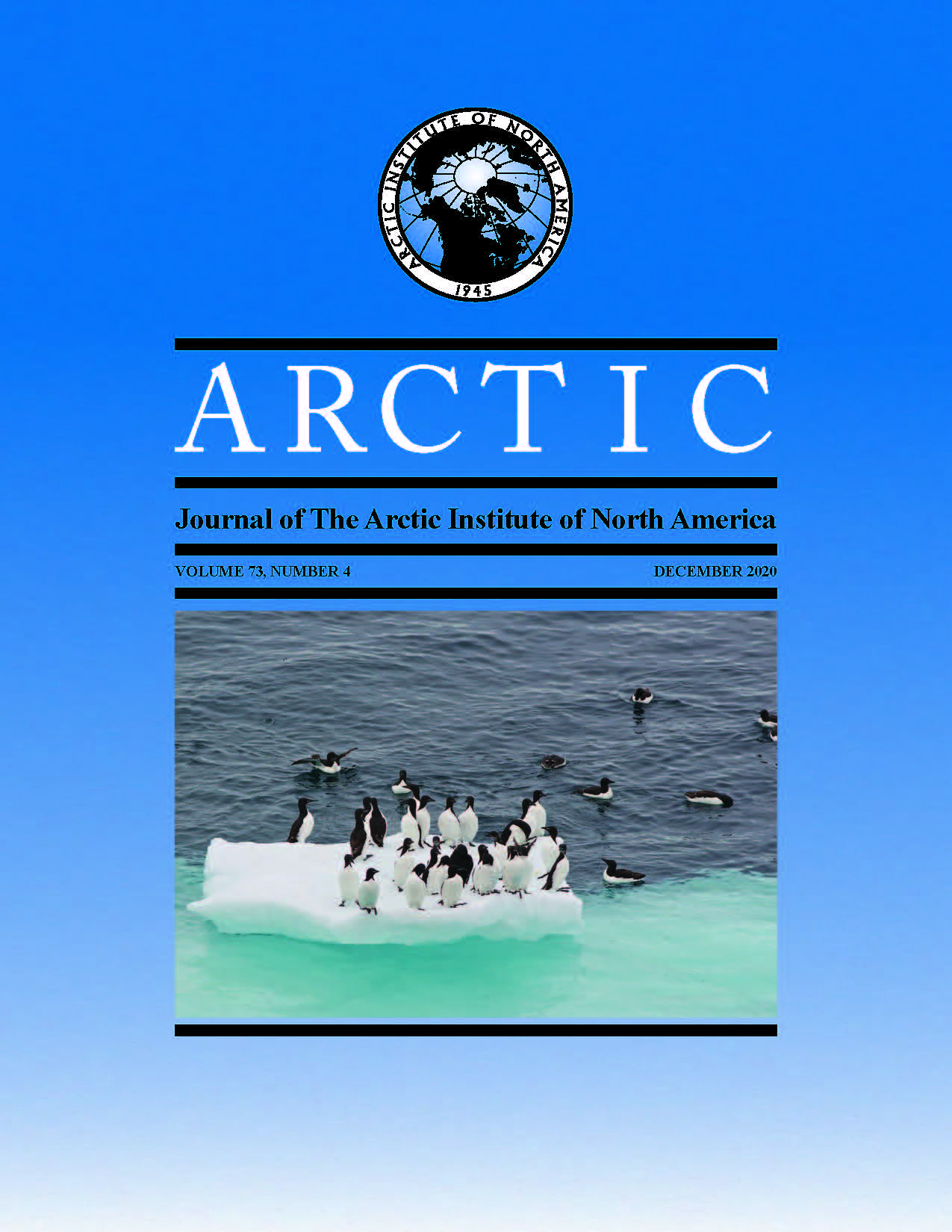The Best of Both Worlds: Connecting Remote Sensing and Arctic Communities for Safe Sea Ice Travel
DOI:
https://doi.org/10.14430/arctic71896Keywords:
Arctic sea ice; Inuit knowledge; synthetic aperture radar (SAR); safety and navigation; remote sensing; cryosphere climate changeAbstract
Northern communities are increasingly interested in technology that provides information about the sea ice environment for travel purposes. Synthetic aperture radar (SAR) remote sensing is widely used to observe sea ice independently of sunlight and cloud cover, however, access to SAR in northern communities has been limited. This study 1) defines the sea ice features that influence travel for two communities in the Western Canadian Arctic, 2) identifies the utility of SAR for enhancing mobility and safety while traversing environments with these features, and 3) describes methods for sharing SAR-based maps. Three field seasons (spring and fall 2017 and spring 2018) were used to engage residents in locally guided research, where applied outputs were evaluated by community members. We found that SAR image data inform and improve sea ice safety, trafficability, and education. Information from technology is desired to complement Inuit knowledge-based understanding of sea ice features, including surface roughness, thin sea ice, early and late season conditions, slush and water on sea ice, sea ice encountered by boats, and ice discontinuities. Floe edge information was not a priority. Sea ice surface roughness was identified as the main condition where benefits to trafficability from SAR-based mapping were regarded as substantial. Classified roughness maps are designed using thresholds representing domains of sea ice surface roughness (smooth ice/maniqtuk hiku, moderately rough ice/maniilrulik hiku, rough ice/maniittuq hiku; dialect is Inuinnaqtun). These maps show excellent agreement with local observations. Overall, SAR-based maps tailored for on-ice use are beneficial for and desired by northern community residents, and we recommend that high-resolution products be routinely made available in communities.


